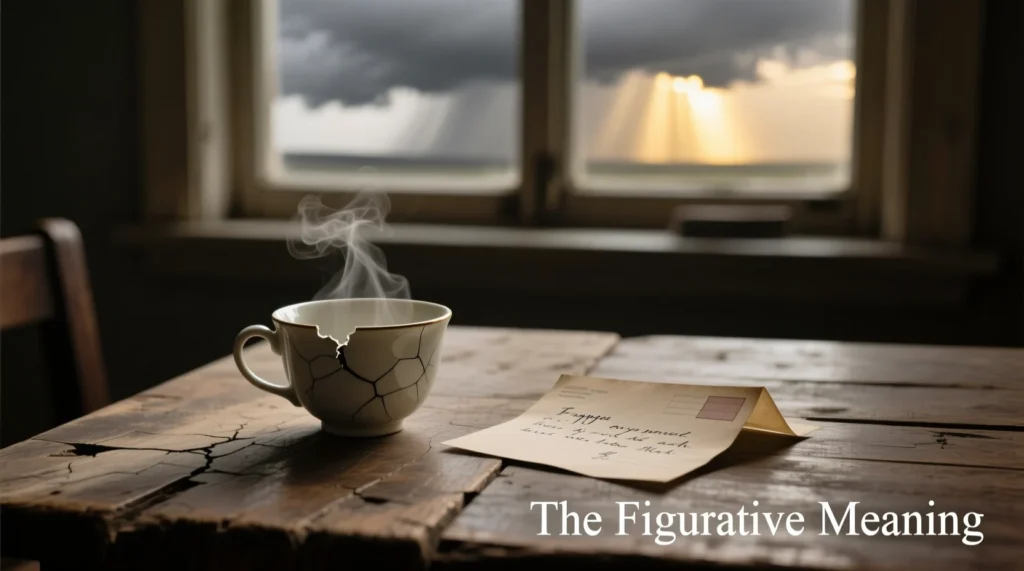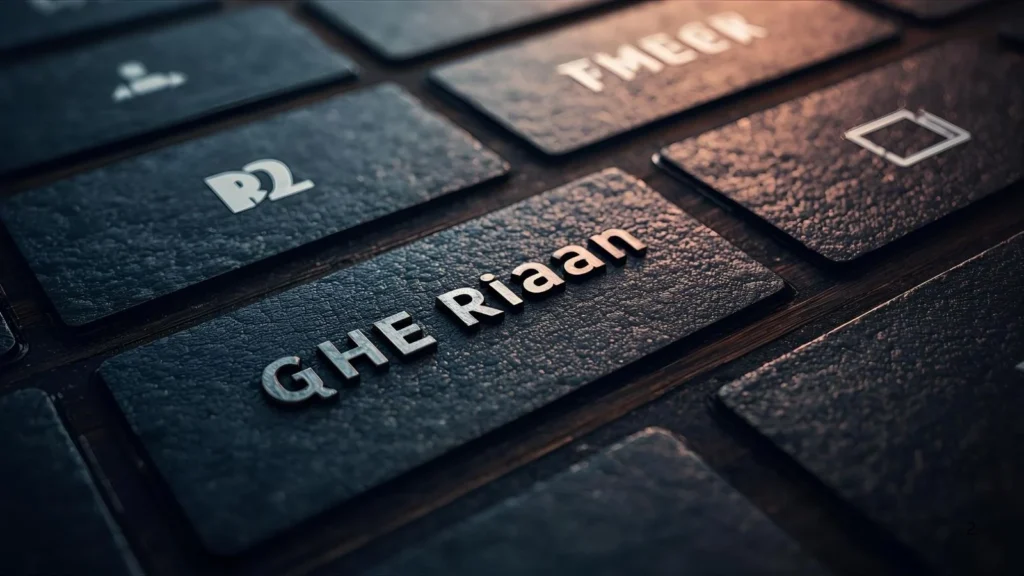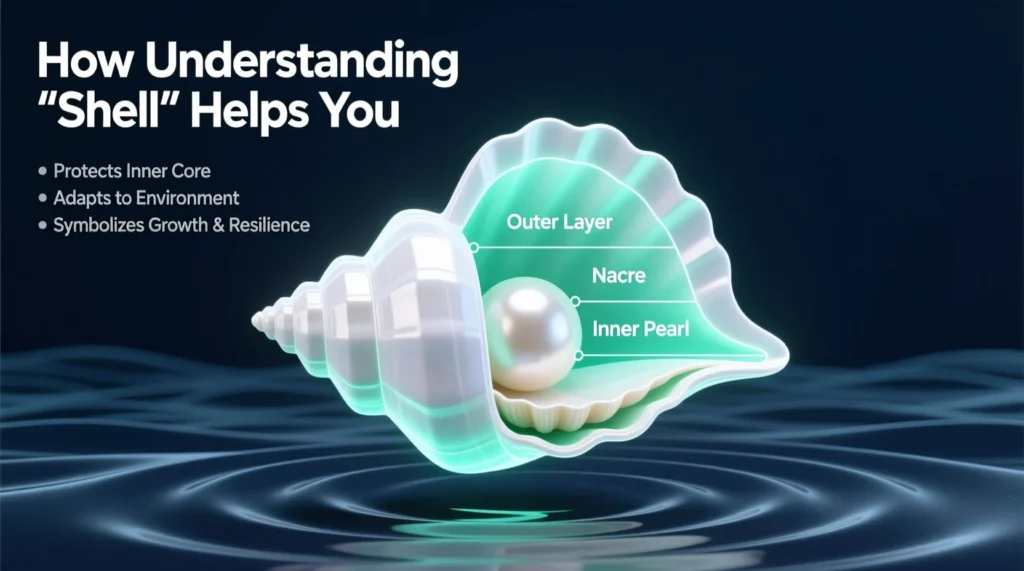If you’ve searched for “The Many Faces of Shell,” you’re probably curious about what this word really means — and why it seems to appear in so many different contexts. From nature to technology, from idioms to brand names, the word “shell” carries a surprising range of meanings.
This article will explain what “shell” means, how it’s used in different fields, and why understanding its many faces helps you use it correctly — whether you’re reading, writing, or speaking. By the end, you’ll see how this simple word can describe beauty, protection, and even computing power.
The Natural Meaning:

When most people hear the word “shell,” they think of seashells — the hard, protective coverings found on sea creatures like clams, oysters, and snails.
In nature, a shell serves as:
- Protection: It keeps animals safe from predators and harsh environments.
- Home: Many creatures live inside their shells, using them as mobile homes.
- Beauty Symbol: Seashells are often collected for their unique shapes and colors, symbolizing peace and coastal life.
🪸 Example:
“She picked up a beautiful pink shell from the beach.”
Here, “shell” is literal — a natural, tangible object connected to the ocean.
The Technological Meaning:

In the world of computers and programming, the term “shell” means something very different.
A computer shell is a user interface that allows you to interact with the operating system. It’s like a protective layer that covers the core (or “kernel”) of the system.
Common examples include:
- Command-line shell: Like Bash, PowerShell, or Zsh, where users type commands.
- Graphical shell: The desktop interface on Windows or macOS.
🧠 Example:
“Developers often use a command shell to execute code directly.”
Here, the “shell” acts as a bridge between the user and the machine — just like how a natural shell connects an animal to its environment.
The Figurative Meaning:

In everyday speech, “shell” often describes someone who seems emotionally closed off or protected from the world.
Common idioms and phrases:
- “Come out of your shell” → to become more open or social.
- “A shell of his former self” → someone who has lost energy or confidence.
🌱 Example:
“After joining the new club, she finally came out of her shell.”
Here, “shell” symbolizes a barrier — a protective emotional layer that a person might hide behind.
The Brand Meaning:

You might also recognize “Shell” as a famous global energy brand — the company known for fuel, oil, and the iconic red-and-yellow seashell logo.
Fun fact:
The Shell logo was inspired by the natural beauty of a scallop shell, chosen to represent energy, movement, and global connection.
In this sense, the word “Shell” goes beyond meaning — it’s become a brand identity linked with reliability and innovation.
The Artistic and Symbolic Meaning

Artists, writers, and poets often use “shell” to symbolize:
- Protection – hiding one’s true self.
- Transformation – as shells break or are left behind by creatures.
- Loneliness – empty shells symbolize something once full of life.
🎨 Example:
“The empty shell on the shore reminded him of lost time.”
In literature and art, a shell often represents what remains after change — beauty, fragility, or resilience.
The Everyday and Industrial Uses

In practical settings, “shell” is also used to describe the outer layer or casing of objects — things that protect the inside.
Examples include:
- Eggshell – the outer covering of an egg.
- Bullet shell – the metal casing of ammunition.
- Building shell – the unfinished outer structure of a building.
- Shell company – a firm that exists only on paper, often for legal or financial reasons.
🧱 Example:
“The new office building is still just a shell; the interiors are yet to be designed.”
In all these examples, “shell” retains its core meaning — something that surrounds or protects what’s inside.
Cultural and Linguistic Connections

Across languages, the word “shell” carries similar themes of protection, form, and outer covering:
| Language | Word for “Shell” | Meaning |
|---|---|---|
| Spanish | Concha | Seashell; also a term of endearment |
| French | Coquille | Shell; also used metaphorically |
| Japanese | 貝殻 (Kaigara) | Literal shell, used in poetry |
| Hindi | खोल (Khol) | Cover or outer layer |
| Arabic | قشرة (Qishrah) | Peel, skin, or outer surface |
These cultural meanings show how “shell” connects with life, defense, and beauty across the world.
How Understanding “Shell” Helps You

Knowing the multiple meanings of “shell” helps you:
- Interpret context correctly — whether it’s a beach story, a tech tutorial, or a business report.
- Express yourself creatively — using metaphors like “coming out of your shell.”
- Expand vocabulary — by learning how one word adapts across cultures and fields.
Conclusion
The word “shell” may seem simple, but it carries many faces — natural, technological, emotional, and symbolic.
Whether you’re talking about the delicate curve of a seashell, the invisible layer of a computer interface, or the emotional walls people build around themselves, “shell” always conveys the same timeless idea: something that protects, hides, or reveals what’s within.



